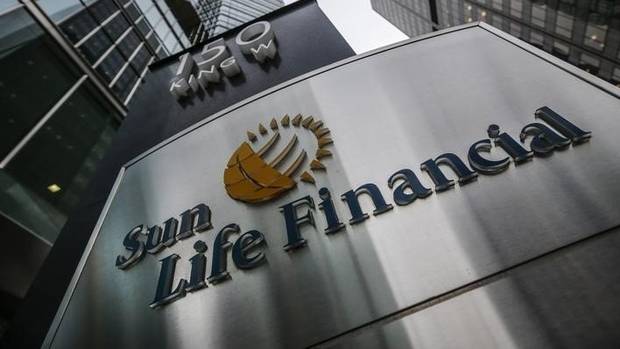On days like today, when markets suddenly snap into a selloff, advisors are often heard asking, “What’s making the market go down?” as they search headlines or the latest Trump tweet to explain the move. But if we can agree that markets are extremely efficient, then we also have to accept that market action on any given day is not typically caused by one specific news item. Instead, it reflects the aggregate of all available information being processed by millions of participants in real time.
Let me try to explain this idea in terms of volatility. The VIX is a number that shows how much investors think the stock market will move, up or down, over the next month. It is based on the prices of stock market options, which are like bets on future movements. When the VIX is low, it means investors expect things to stay fairly steady, like a calm day at sea. When it is high, it suggests they are bracing for big waves and uncertainty. Think of the VIX like a mood ring for the market. It reflects whether investors are feeling calm, anxious, or somewhere in between, based on what they expect to happen in the near term.
We watch the VIX every day. In an efficient market where trillions of dollars are constantly turning sentiment into a measurable reading, the VIX acts as an oscillator. Like reading tea leaves, it offers signals, but those signals can be noisy. When we convert this oscillator into a point and figure chart, we remove the short-term noise and are better able to see the bigger picture. SIA practitioners use this method to see the forest instead of getting lost in the trees.
The VIX had recently fallen to historically low levels, creating a sense of ease across markets and encouraging investors to rotate out of low-volatility, dependable earnings plays and into higher-beta assets. Technology and other high-growth sectors took the spotlight, while mid and small-cap stocks saw renewed interest for the first time in years. Even emerging markets started attracting flows. In the third quarter of 2025, the VIX began forming a price discovery triangle, and just yesterday, that pattern completed to the upside, indicating a bullish breakout in volatility.
Today, the shift accelerated as institutional money managers launched hedging programs in earnest, causing the VIX to spike 30% within minutes. It briefly reached 22.20 before pulling back to 19.50, then climbed again to 21.19 as of this report. From a point and figure perspective, today’s movement confirmed a bullish spread double top as the index crossed 17.30, with another signal triggered at 20.67. A move above 22.38 would produce a spread triple top, marking an even stronger technical breakout, although that level has not been reached so far. These are critical inflection points that should be closely monitored.
Against this backdrop, it is worth turning our attention to some of the more "boring" stocks in the market, names that have not delivered much in the way of returns for investors and, as a result, have slipped in their relative performance. Over the course of 2025, many of these low-volatility investments have steadily moved down the SIA Relative Strength matrices, losing ground as capital rotated into more volatile and growth-oriented areas. While sectors with explosive potential have taken center stage, these steadier names have been left behind, underperforming and, in many cases, pushed aside by a market chasing faster-moving opportunities.
That said, we are always on the lookout for names that are quietly climbing the ranks in the SIA Relative Strength Reports. One such name is Sun Life Financial (SLF.TO), which, while still deeply unfavored both on a sector basis and within the SIA S&P/TSX 60 Index Report where it currently sits at position 41 of 60, is potentially showing signs of life. Most notable is the price discovery triangle that has been forming in SLF.TO. If today’s performance ($86.39, up 1.30%) is included on the 2% point and figure chart, it would put the stock within a hair of completing a bullish triangle. Combined with options market activity showing financial operators actively buying insurance, this potential shift toward a lower-volatility investment may represent the second hammer to fall, where actual money flows begin to follow the signals already visible in the derivatives market.
Again, it is not the policy of rules-based SIA practitioners to act on what our relative strength models have not yet confirmed. However, when the market may be approaching an inflection point, these early signals can provide the context and confidence to engage in sound portfolio risk management. This includes taking stock of high-volatility positions that are weakening, preparing a list of more stable alternatives, and creating a tactical game plan should this localized bout of volatility broaden. Just as important is having a communication strategy ready, so you can stay aligned with your clients and avoid being perceived as reacting late or offside.
There is no need for fear, only preparation. As the British Army famously teaches, “Proper Prior Planning Prevents Piss Poor Performance.” Having a plan is what separates professionals from passengers. This report is part of that plan, so you can take clear, proactive steps now and be positioned with confidence no matter what direction the market takes next.
Disclaimer: SIACharts Inc. specifically represents that it does not give investment advice or advocate the purchase or sale of any security or investment whatsoever. This information has been prepared without regard to any particular investors investment objectives, financial situation, and needs. None of the information contained in this document constitutes an offer to sell or the solicitation of an offer to buy any security or other investment or an offer to provide investment services of any kind. As such, advisors and their clients should not act on any recommendation (express or implied) or information in this report without obtaining specific advice in relation to their accounts and should not rely on information herein as the primary basis for their investment decisions. Information contained herein is based on data obtained from recognized statistical services, issuer reports or communications, or other sources, believed to be reliable. SIACharts Inc. nor its third party content providers make any representations or warranties or take any responsibility as to the accuracy or completeness of any recommendation or information contained herein and shall not be liable for any errors, inaccuracies or delays in content, or for any actions taken in reliance thereon. Any statements nonfactual in nature constitute only current opinions, which are subject to change without notice.













